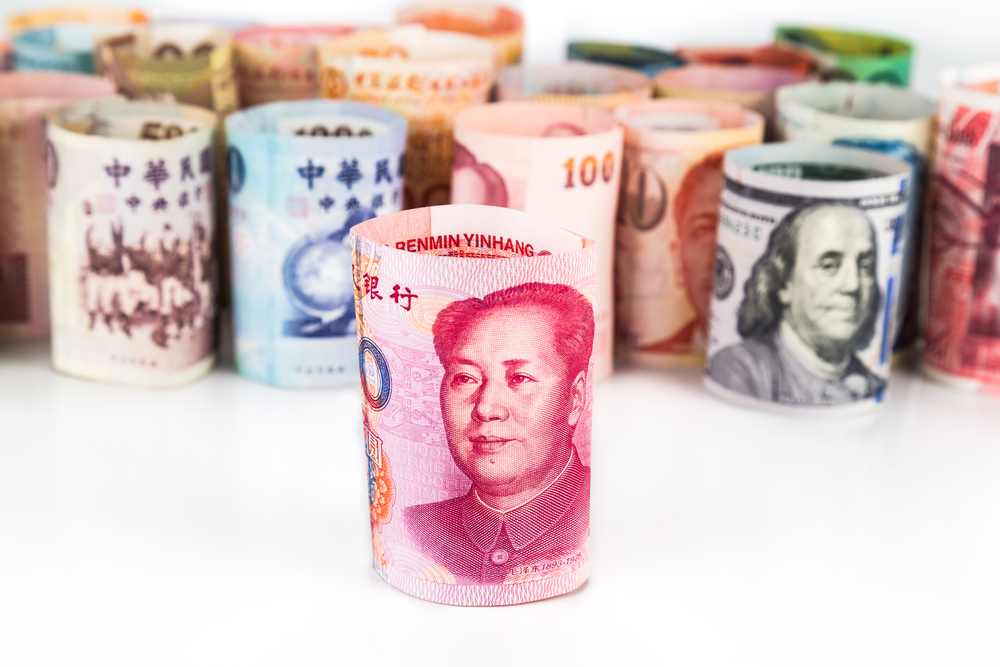Defining the Yuan as ‘Freely Usable’

Please note that we are not authorised to provide any investment advice. The content on this page is for information purposes only.
On the last day of November, at the conclusion of its five-yearly review of the composition of the Special Drawing Rights (SDR), the IMF elevated the renminbi to its SDR basket. The RMB is now one of five major ‘freely usable’ reserve currencies in the international monetary system.
On the last day of November, at the conclusion of its five-yearly review of the composition of the Special Drawing Rights (SDR), the IMF elevated the renminbi to its SDR basket. The RMB is now one of five major ‘freely usable’ reserve currencies in the international monetary system.
The elevation is recognition of the progress made by Beijing over the past half-decade in liberalising and deepening its monetary and financial systems. It is also a vindication of the RMB internationalisation strategy championed by the People’s Bank of China under Governor Zhou Xiaochuan. The strategy was initiated in response to the global financial community’s quiet rejection of an earlier Chinese proposal for a new international reserve currency, with an enhanced role for the SDR.
In early 2009, deep in the trough of the global financial crisis, Governor Zhou had proposed the creation of a super-sovereign reserve currency that was to be disconnected from individual nations — and thus from their credit-based national currencies. It would be issued in accordance with predictable rules and would remain stable in value. As a first step, he suggested the SDR be enhanced as a reserve asset and that it be made usable as an invoicing and settlement currency for international trade and financial transactions. In time, it could be backed by real assets such as a reserve pool.
The proposal was greeted politely, but it was left to wither on the vine.
The proposal was partly motivated by the People’s Bank’s apprehension of large capital losses on — and lack of alternatives to — its towering dollar-denominated reserve holdings. This apprehension stemmed from potential macroeconomic and exchange rate instability engendered by the US government’s crisis-driven fiscal stimulus and quantitative easing policies. Determined to transcend this dilemma, Governor Zhou chose his next best option: to internationalise the renminbi by making it usable as an international invoicing and settlement currency.
Starting with a pilot scheme four months later to settle cross-border trade between the mainland and Hong Kong in RMB, China embarked on a three-stage march to currency internationalisation. In the first stage, the renminbi was to be tested as a unit of account for international transactions by allowing it to circulate outside the mainland. Deepening and widening this pool of currency overseas, including via the development of offshore RMB-denominated asset markets, was to be the second step. Foreign entities were permitted in 2010 to tap into these accumulated overseas balances and issue RMB-denominated bonds, dubbed ‘dim sum bonds’.
In late 2011, the third stage was inaugurated, with enterprises in Hong Kong and qualified investors permitted to use offshore renminbi proceeds for onshore investments. These reverse flow measures, aimed at internationalising RMB bond markets inside China, were progressively broadened and accelerated during the past year.
In November 2014, international investors were granted direct access to mainland equity markets via the Shanghai–Hong Kong Stock Connect scheme. In July 2015, prior approval to invest in onshore bond markets was scrapped for foreign central banks and other sovereign-linked investors. In October, China launched a Cross-border Inter-bank Payments System that connects global RMB users and provides a streamlined platform for payments clearance and settlement. In addition, earlier this December, South Korea became the first sovereign to issue RMB-denominated bonds, dubbed ‘panda bonds’, onshore.
As this process of internationalisation has proceeded, a complementary set of far-reaching financial deepening initiatives related to interest rate deregulation and exchange rate reform were undertaken.
So where to from here for the renminbi?
Economic history provides a useful guide. In the early 1910s, despite being the world’s largest exporting nation, virtually no trade credit was provided by US banks or denominated in dollars. Such credits originated in London, were denominated in sterling, linked to Great Britain’s global trading network, traded on active secondary markets back in London, and backed by the Bank of England during bouts of market illiquidity. With the creation of the Federal Reserve and the removal of overseas branching prohibitions, the greenback rivalled sterling as a leading international currency by the end of the decade.
Likewise, the red-back will assume its position, albeit more gradually, alongside the dollar as a premier reserve currency in the international system. This will unfold as renminbi-based claims increasingly circulate overseas as an active secondary market for RMB-denominated securities, open to residents and non-residents alike, acquires qualitatively greater depth, and as the People’s Bank establishes its credentials as a market maker of last resort for such securities.
During this transitional phase, Beijing must vigilantly guard against exchange rate overvaluation and the excesses that typically accompany financial deregulation. It must also whittle down the sheer scale of bank liabilities as it liberalises the capital account. To play banker to the world, China must ultimately be prepared to borrow short, lend long and bolster its ‘lender of last resort’ function with a fiscal backstop that is globally credible.
A super-sovereign reserve currency, managed by a global institution and used to control global liquidity, is a worthy aspiration but a distant one. As the G20 president, China should instead imaginatively lay the groundwork for a set of more attainable SDR-linked arrangements that will reinforce the fraying global financial safety net.
This could include the provision of all financing during crises with SDR loans. It could also involve the release of SDRs during crises to fund the IMF’s operations as it intermediates the provision of liquidity between reserve currency central banks and recipient central banks in crisis-stricken countries. This would be a worthy contribution to the debate by the SDR club’s most recent entrant.
The renminbi comes of age is republished with permission from East Asia Forum





